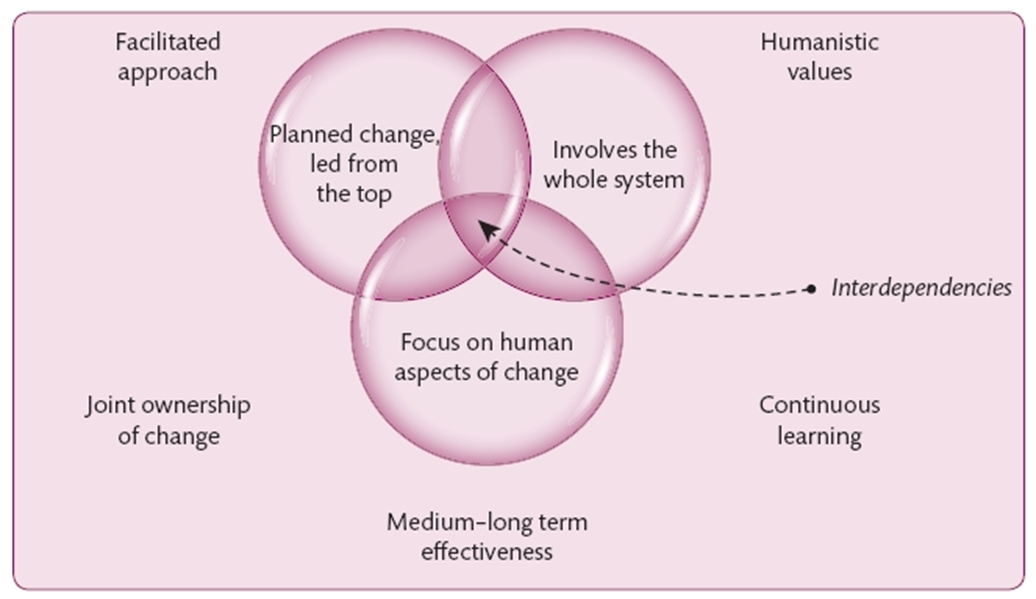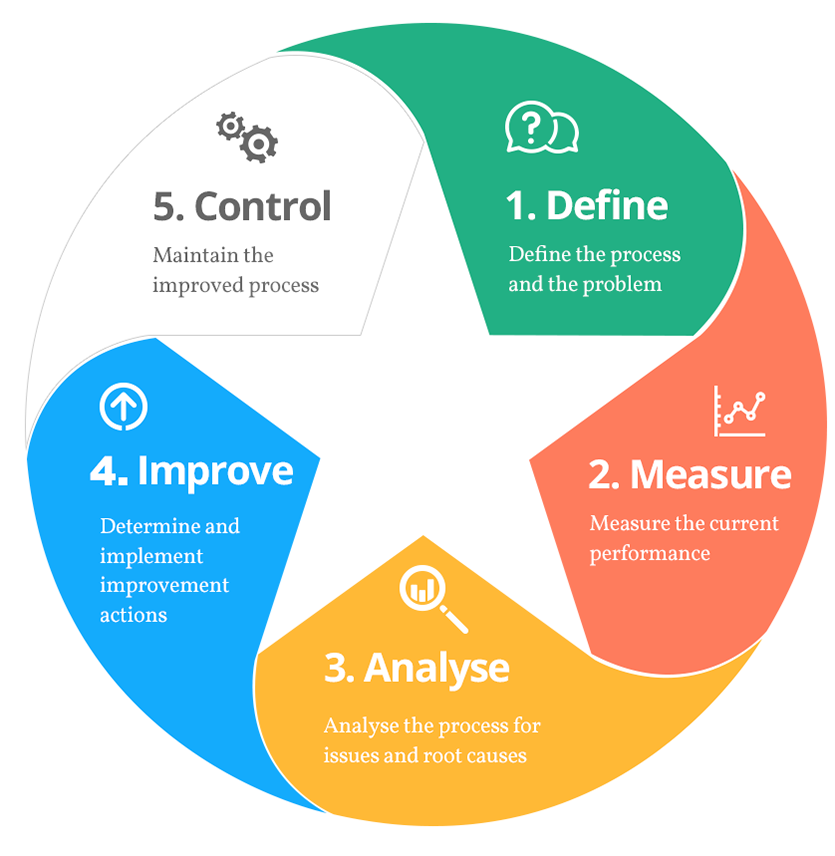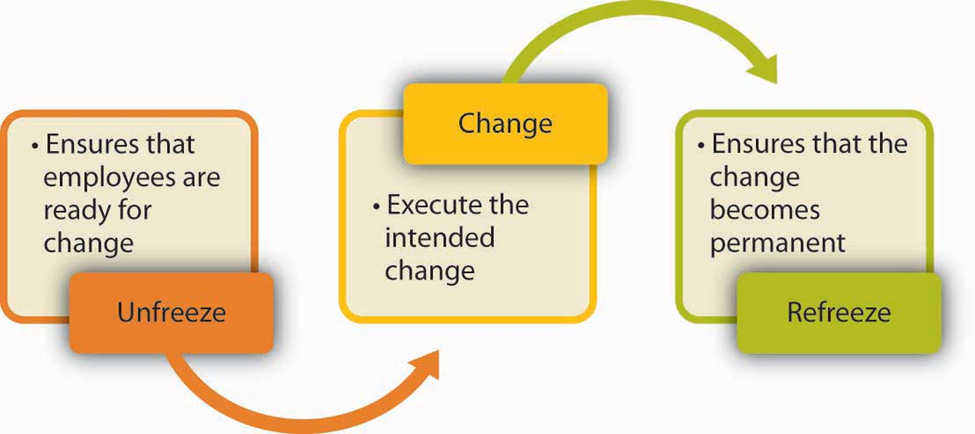Introduction
Managing change is critical in ensuring that there is a continuous improvement of structures and systems in an organization. The Abu Dhabi National Oil Company, often referred to as ADNOC, is one of the largest firms in the United Arab Emirates (Mallakh, 2015). The firm has its headquarters in Abu Dhabi and has about 55,000 employees working in different departments. HH Sheikh Khalifa Bin Zayed is the chairperson of the board of directors while Sultan Ahmed Al Jaber is the company’s director-general and chief executive officer (Axon & Hewitt, 2019). Founded in 1971, the company has become the dominant player in the United Arab Emirates’ oil and gas industry.
ADNOC is the main exporter of petroleum products in the country. The management of this company has been keen on hiring both locals and expatriates to ensure that it has a pool of highly talented employees who can enable it to compete favorably in the international market. The company has been dealing with various issues relating to employees’ well-being over the past several years. Mallakh (2015) explains that one of the issues that have emerged at this company is the limited emergency leave and the number of hours that an individual can be permitted to be away from the job.
These issues lower employee morale and performance, hence they need to be addressed. The purpose of this paper is to analyze a change process, where this company is expected to introduce additional emergency leave for its employees.
Identification of the Change
The Abu Dhabi National Oil Company is one of the best employers in the UAE in terms of remuneration packages that it offers to its employees. According to Gibbons (2015), the company has been attracting some of the most talented individuals in the global oil and gas industry because of its attractive remuneration. The strategy is meant to ensure that this firm can maintain a pool of skilled and innovative workers that can redefine the operations of the company. Although the global market for the products that this company offers has been expanding, competition is also getting stiffer than before, and it is critical for a firm to embrace the best practices in the industry.
Voehl and Harrington (2016) explain that strategies that a firm uses in its operations depend on the capacity and capability of its employees. As such, recruiting highly talented employees is just one of the steps of improving the efficiency of a firm. It is equally important to ensure that they are retained and that they remain motivated while working for the firm. Attractive remuneration alone is not enough to keep employees and ensure that they remain motivated. Have, Have, Huijsmans, and Otto (2017) believe that employees should feel respected.
The current employees at ADNOC have complained that permission hours and emergency leave is very limited. They find it difficult addressing personal emergencies because the company expects them to be at work without fail. When one has an emergency, it takes lengthy processes to get approval from the human resource department. In some cases, one would be expected to forfeit their holidays if they take several days away from work because of personal emergencies.
The issue has raised concern among most of the workers in the company. They feel that management does not care about their well-being. Holloway (2014) warns that it is important for the management to avoid cases where employees feel they are treated like robots. When the management creates an atmosphere where personal issues of workers are not the concern of the management, then the productivity will drop. It is not possible for an individual with troubled mind to register optimal performance. In fact, their poor performance may have a direct negative impact on the overall performance of the department.
The management of this company needs to embrace change. The investigation shows that the majority of the employees feel that a new system should be introduced that would allow them to have a 5-day emergency leave every year. The permission hours should also increase when there is a genuine reason for them to be away from work. The goal of this strategy is to ensure that whenever employees are at work, they are in their best state of mind. They should be settled and ready to give their best performance.
Gibbons (2015) explains that one of the common mistakes that managers make is the belief that the presence of an employee at the workstation is sufficient. In a company, that involves delicate operations such as that in ADNOC, having an absent-minded employee can pose a serious danger to themselves, other employees, and the company’s infrastructure. The proposed change is not only meant to create an enabling environment for the employees but also to improve their performance by enhancing their morale. The management of this company should understand that the main reason for introducing this change is to make employees feel comfortable, respected, and valued by the company. It will reduce the likelihood of the firm’s best-performing workers moving to rival regional companies.
Applying Theories and Theoretical Concepts
When introducing change in a new organization, Holloway (2014) explains that it is important to understand that some people may not be comfortable. Many people often fear that under the new system, their skills and competencies may be irrelevant. Others may feel that under the new system, they may be expected to deliver more, and as such, they would be required to spend more time at work and improve their skills.
The management is often opposed to a new system that involves spending additional resources because that would lead to reduced profitability within the company. Despite the numerous concerns that different stakeholders may have, change is inevitable, and it is critical for a firm to find ways of dealing with it in the most effective way possible. Gibbons (2015) advises that using various theories and theoretical models may help explain the relevance of change and introduce smooth ways of bringing change within an organization.
The organizational development model of change below identifies factors that need to be considered when introducing change within an organization. One way of introducing change is the facilitated approach. In this case, the management would identify areas that need to be redefined and then they will conduct what Voehl and Harrington (2016) refer to as planned change led from the top. It involves limited consultation. Junior employees would be informed about the decision of the top management, and what is expected of them. The strategy is effective when dealing with emergencies where there is limited time to consult numerous stakeholders.
The other strategy is the joint ownership of change. In this case, the management will focus on the human aspect of change. The new system should have a direct benefit to the employees, managers, shareholders, and all other stakeholders involved. The proposed change of introducing additional emergency leave days is humanistic. It is focused on ensuring that employees can be at work when they have a settled mind and in good health. The change will improve their overall performance, which would benefit managers and shareholders of the firm. Customers will also be satisfied when they are served with employees who are happy and committed to meeting their needs.
Continuous learning is another focus that the management should not ignore when introducing change. Currently, the firm’s focus would be to introduce additional days of work. However, it does not mean the firm will remain rigid when new best practices emerge. Some companies are even allowing their employees to work remotely from home as long as they can deliver the best quality of services (Have et al., 2017). The management should remain flexible and willing to embrace new practices. The humanistic values should not be ignored, as explained in the model. The whole system, after change is introduced, should operate under the humanistic values and principles set by the firm. The organization should avoid short-term gratification that may have serious long-term consequences.

Lean six-sigma is a common tool that companies are currently using to introduce change effectively and with minimal resistance from different stakeholders. Six Sigma model identifies five stages that should be followed to ensure that a new system is introduced effectively. The first step is to define the process and the problem. The stage is critical in ensuring that all stakeholders understand why it is necessary to drop one practice and embrace another.
The problem at ADNOC has been identified as the limited leave time and number of emergency hours that employees can take within a year. Most of them feel that the lack of emergency leave is affecting their morale as some of them are often forced to go to work even when they are sick. The second step is to measure the current performance (Have et al., 2017). The management would need to conduct an assessment to determine the level of morale of employees and the manner in which it affects their performance in the firm. The primary goal of measuring the performance at this stage is to help the management to compare the effectiveness of the workforce before and after introducing change.
The third stage is to analyze the process for issues and root causes (Gibbons, 2015). The management will conduct an investigation to understand the nature of current practices, company policies, and principles that define their existence, and reasons why employees feel they should change. The managers should investigate why the company has no emergency leave days for its employees and how such a practice affects the overall performance of the firm. The fourth stage is to determine and implement improvement actions (Voehl & Harrington, 2016). It is at this stage that the company will introduce change.
The management shall have understood the weaknesses of the current system and the relevance of introducing the new system to address issues identified. The last stage is to maintain the improved process (Have et al., 2017). Once a new system is introduced, the management would need to introduce new policies that would help protect their existence. The new policy should explain benefits of the emergency leave days, and the manner in which it benefits different stakeholders. The management may also be interested in conducting the second survey to measure the performance of the employees after introducing the new system to establish its benefits. Figure 1 below summarizes the steps that should be taken when using this model to introduce change within the firm.

One of the most common theoretical models often used to introduce change in an organization is Kurt Lewin’s change model, shown in figure 3 below. Gibbons (2015) explains that the model has been proven effective, especially when introducing a new system that may not be popular among a significant population within the workplace. In this systematic way of introducing change, the first step involves unfreezing. It is specifically meant to ensure that employees and other stakeholders are ready for change (Voehl & Harrington, 2016). Those responsible for introducing change are expected to start by explaining reasons why the current system is ineffective and benefits of introducing the new system.
One of the most important tasks that should be undertaken at this stage is to address fears and concerns of the employees. Some of them may fear the possibility of losing their jobs. Others may be worried about additional tasks they have to undertake while some managers may be concerned about the cost. When introducing the emergency leave days, the main issue would be the additional cost. The management may feel that it would force the firm to hire additional workers to enable it to be in a position to introduce 5 emergency leave days annually for its employees. The team responsible for this new practice should explain the benefits of the change to the management in terms of improved productivity of the workforce.
The second step when using this model is the actual change process. Holloway (2014) explains that one would be required to execute the intended change based on the preparations conducted. The assumption made is that at this stage, all stakeholders will be ready to embrace the new system based on the preparations that they have gone through in the initial phase. It is important to ensure that the new system meets the expectation as previously promised.
In this case, the company will introduce a new policy that adds permission hours and 5 emergency leave days in a year. The last phase, as explained in this model is to refreeze, where the management will be required to ensure that the change becomes permanent (Have et al., 2017). The new practice should be entrenched within the company’s policies and systems. Everyone should be made to understand why the management had to introduce the practice.
The Abu Dhabi National Oil Company’s board of directors may be concerned about the cost effects of the new system. The management should remain clear and explain that although the cost may increase, the overall effect of the new practice has benefits that outweigh the cost. The improved morale of the employees would improve their performance, which in turn would have a positive impact on the profitability of the company.

Discussion
When introducing change in an organization, the primary goal is often to improve productivity. The management of ADNOC has done a good job of introducing attractive remunerations to its workers. However, a new concern emerged where a significant number of these employees feel that the company has failed to take into consideration the need for emergency leave days. Holloway (2014) explains that the mental and physical strength of an employee defines their performance within a firm. When an employee is sick or when they are mentally distracted because of a personal emergency, they cannot perform optimally as expected of them.
In fact, they are likely to commit mistakes that may have devastating consequences for the company. As such, many companies have now introduced new policies meant to enhance the well-being of employees. According to Voehl and Harrington (2016), a number of large multinational corporations have introduced counseling units within the human resource department where psychologists and other mental health experts can help employees overcome emotional challenges. Others have introduced additional holidays just to ensure that their workers remain active and committed to their work.
The decision to introduce additional permission hours and 5 emergency leave days will have a significant impact on this company. It will eliminate mistakes that employees make because of coming to work when they are sick or mentally disturbed. It will be a reminder to all the workers of ADNOC that the management cares for them and is committed to serving their interest. Holloway (2014) explains that such non-financial incentives often have a significant benefit on employees. It makes them feel respected. Improved morale will have a direct impact on their performance. The overall output of a company depends on the individual performance of employees.
When these workers have settled mind, they will be capable of delivering the best output in their respective assignments. One of the major concerns that the management of ADNOC has is losing its well-trained and experienced employees to some of its regional competitors in the oil and gas industry. When an individual is forced to work under extreme pressure, they may feel maltreated by the organization. As such, they may easily consider quitting the firm to work in another organization where they feel their interests would be protected. It takes time and money to train an employee over a given period. Losing a talented worker may have a serious impact on the firm. Embracing this new practice will help to avoid such cases of high employee turnover rates.
Conclusion
Change is inevitable to any organization, but the manner in which it is introduced matters a lot. As shown in the discussion above, although change is unavoidable, many people tend to fear it for different reasons. As such, it would be common to find cases where different stakeholders resist it because of personal concerns. The study shows that although ADNOC has one of the best remuneration packages for its employees, the fact that it does not offer emergency leave days is a major concern. Sometimes it forces employees to come to work when they are sick or when dealing with serious emotional disturbances.
The proposed change is that the HR department should introduce 5 emergency leave days every year. The strategy would ensure that employees come to work when they are physically and mentally strong enough to undertake their respective duties. The new practice will improve the morale of workers and the overall performance of the company. It will also reduce the possibility of talented employees of this company moving to other firms because of the feeling that they are frustrated.
References
Axon, A., & Hewitt, S. (Eds.). (2019). United Arab Emirates: 1975/76-2018. Boston, MA: Brill.
Gibbons, P. (2015). The science of successful organizational change: How leaders set strategy, change behavior, and create an agile culture. Melbourne, Australia: Pearson Education.
Have, S., Have, W., Huijsmans, A., & Otto, M. (2017). Reconsidering change management: Applying evidence-based insights in change management practice. New York, NY: Routledge.
Holloway, G. (2014). Change management: New words for old ideas. Bloomington, IN: Xlibris Corporation.
Mallakh, R. (2015). The economic development of the United Arab Emirates: RLE economy of the Middle East (2nd ed.). New York, NY: Routledge.
Myers, P., Hulks, S., & Wiggins, L. (2012). Organizational Change. Oxford, UK: Oxford University Press.
Voehl, F., & Harrington, J. H. (2016). Change management: Manage the change or it will manage you. New York, NY: CRC Press.
